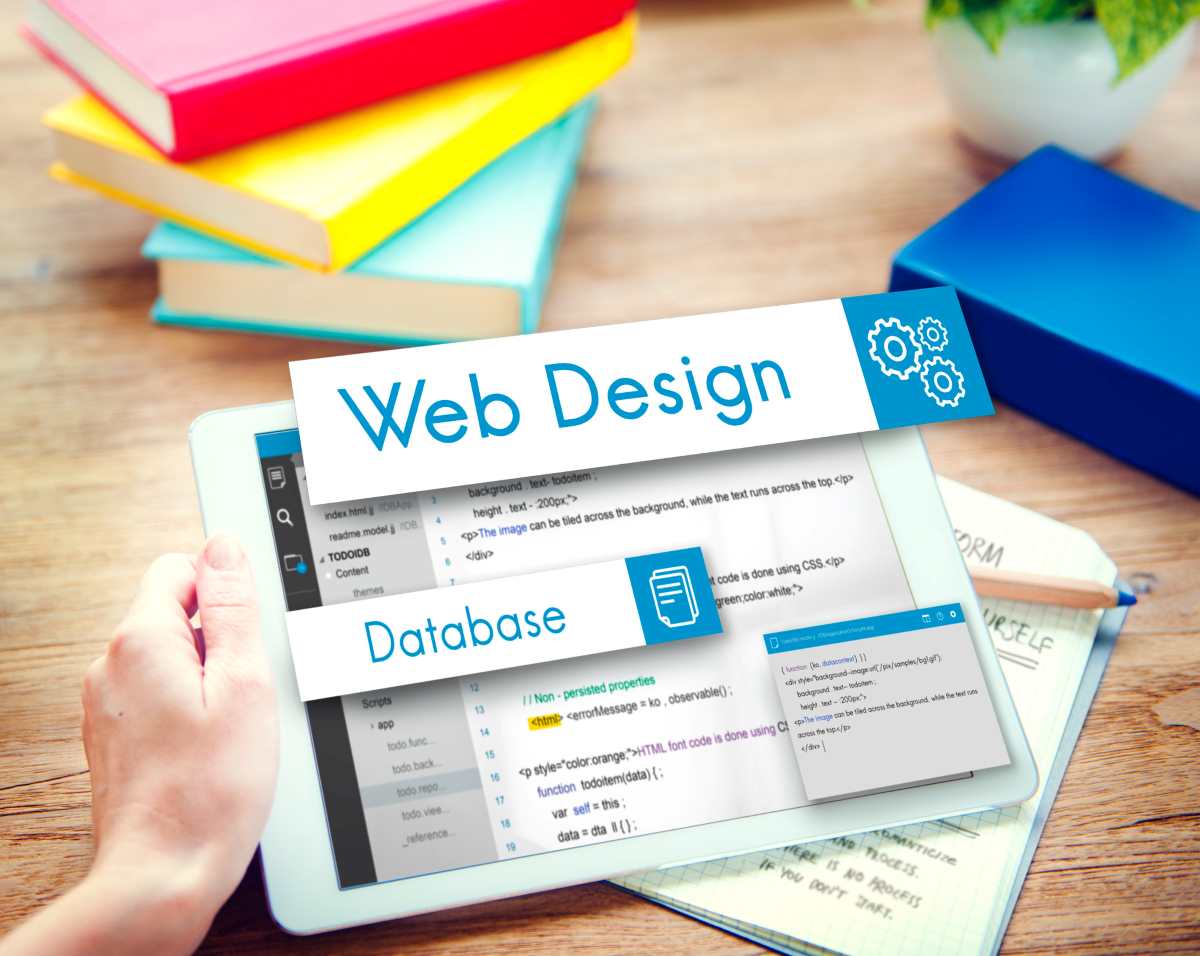The Importance of Responsive Web Design for Small Businesses
In today’s digital world, people use various devices to browse the internet, including smartphones, tablets, and computers. A responsive web design means your website automatically adjusts to look good and function well on any device, whether it’s a small phone screen or a large desktop monitor.
Why This Matters:
- Improves User Experience: When your website adapts to different screen sizes, visitors have a better experience. They can easily read content, navigate the site, and interact with features, regardless of the device they’re using.
- Increases Traffic: More than half of internet traffic comes from mobile devices. If your website isn’t mobile-friendly, you might lose potential customers. A responsive design ensures that mobile users can access and enjoy your site, leading to more visitors.
- Boosts Engagement: When visitors find your website easy to use, they are more likely to stay longer, explore more pages, and interact with your content. This increased engagement can lead to more inquiries, sign-ups, and sales.
- Enhances Sales: A positive user experience and higher engagement can significantly impact your sales. When customers can easily find what they’re looking for and navigate your site without frustration, they’re more likely to make a purchase.
Having a responsive web design is essential for small businesses. It helps attract more visitors, keeps them engaged, and ultimately boosts your sales by providing a seamless experience across all devices.
Why Responsive Web Design Matters

What is Responsive Web Design?
Responsive web design means your website will automatically adjust to look good and work well on any device, whether it’s a large desktop screen, a tablet, or a small smartphone.
Why is it Important?
- Mobile Usage is High:
- More than half of all internet traffic comes from people using mobile devices like smartphones and tablets.
- If your website isn’t mobile-friendly, you’re missing out on a lot of potential customers.
- Improves User Experience:
- When your website looks great and is easy to use on any device, visitors will have a better experience.
- Happy visitors are more likely to stay longer, explore your site, and become customers.
- Reduces Bounce Rates:
- Bounce rate is the percentage of visitors who leave your site after viewing only one page.
- A responsive website keeps visitors engaged, reducing the chances of them leaving quickly.
- Increases Conversion Rates:
- Conversion rate is the percentage of visitors who take a desired action, such as making a purchase or signing up for a newsletter.
- A responsive design makes it easier for visitors to navigate your site and complete these actions, leading to more sales and sign-ups.
- Gives a Competitive Edge:
- If your website is user-friendly on all devices, it stands out from competitors who may not have a responsive design.
- This can give your small business an advantage in attracting and retaining customers.
In simple terms, responsive web design helps ensure that your website performs well and looks good no matter how people access it. This is crucial for reaching more customers, keeping them engaged, and ultimately driving more business success.
Key Techniques for Achieving Responsive Web Design

Creating a responsive website involves using specific techniques to ensure it looks good and works well on all devices. Here are three key techniques explained in simple terms:
1. Fluid Grid Layouts
- What It Is: Instead of using fixed units like pixels to define the size of elements on your website, you use relative units like percentages.
- How It Works: Imagine you set a section of your website to take up 50% of the screen. With fluid grids, this section will always occupy half the screen, no matter the device.
- Why It Matters: This flexibility ensures your layout adapts smoothly to different screen sizes, from small phones to large desktop monitors.
2. Flexible Images and Media
- What It Is: Making sure that images and media (like videos) resize automatically within their containers.
- How It Works: By using a rule in your website’s CSS (the language used to style web pages), you can set images to have a maximum width of 100%. This means images will shrink to fit the screen size but won’t stretch larger than their original size.
- Why It Matters: Flexible images and media prevent the layout from breaking or looking awkward on different devices. Everything stays proportionate and looks good.
3. CSS Media Queries
- What It Is: A way to apply different styles to your website based on the device’s characteristics, like its width, height, and orientation (portrait or landscape).
- How It Works: You write specific CSS rules that only apply when certain conditions are met. For example, you can use @media (max-width: 768px) to change the layout for screens that are 768 pixels wide or less, which covers most tablets and smartphones.
- Why It Matters: Media queries allow you to tailor your website’s appearance for various devices, ensuring an optimal user experience whether someone is using a phone, tablet, or computer.
Simplified Example:
- Fluid Grid Layouts: Think of your website layout like a flexible rubber band that stretches or shrinks to fit different screen sizes.
- Flexible Images and Media: Consider images on your site as balloons that can get smaller but won’t stretch bigger than their original size.
- CSS Media Queries: Imagine having different outfits for different weather conditions. Media queries are like instructions that tell your website to “wear” different styles based on the “weather” (screen size) it detects.
By using these techniques, your website will adapt seamlessly to any device, providing a better experience for your visitors and helping your small business succeed online.
Essential Tools for Responsive Web Design

To create a website that looks good on any device, you can use several tools that simplify the process. Here are four essential tools explained in simple terms:
1. Bootstrap
- What It Is: Bootstrap is a toolkit that helps you build responsive websites quickly.
- How It Works: It comes with a grid system, which divides your webpage into a flexible layout that adjusts to different screen sizes. It also includes pre-designed buttons, forms, and other elements you can easily use.
- Why It’s Useful: Bootstrap makes it much easier to create a mobile-friendly website without needing to write a lot of code from scratch.
2. Foundation
- What It Is: Foundation is another toolkit for creating responsive websites.
- How It Works: Like Bootstrap, it offers a grid system to help your layout adjust to various screen sizes. Foundation is known for its flexibility, meaning you can customize the design more easily.
- Why It’s Useful: If you want more control over your website’s look and feel, Foundation provides tools to help you create a unique, responsive design.
3. Adobe XD
- What It Is: Adobe XD is a design tool for creating website layouts.
- How It Works: It lets you make prototypes and wireframes, which are like blueprints for your website. You can see how your design will look on different devices and make adjustments as needed.
- Why It’s Useful: Adobe XD helps you plan and visualize your website’s design, ensuring it will be responsive and user-friendly before you start building it.
4. Media Queries Level 4
- What It Is: Media Queries Level 4 is an advanced feature for controlling how your website looks on different devices.
- How It Works: It allows you to apply specific styles based on detailed characteristics of the device, like its screen width, height, and even how people interact with it.
- Why It’s Useful: With Media Queries Level 4, you have more precise control over your website’s design, making it look and work great on any device.
Simplified Example:
- Bootstrap and Foundation: Think of these as pre-made building blocks for your website. They provide the structure and design elements, so you don’t have to start from scratch.
- Adobe XD: Imagine drawing a detailed plan for your website, showing how it will look on different devices. Adobe XD helps you do this planning visually.
- Media Queries Level 4: This tool is like giving your website special instructions on how to dress and behave depending on the device it’s being viewed on, ensuring it always looks its best.
By using these tools, you can create a responsive website that automatically adjusts to look good on any device, providing a better experience for your visitors and helping your small business succeed online.
Shocking Success Stories of Responsive Web Design
Responsive web design can have a tremendous impact on your business. Here are two real-life examples that show how effective it can be:
ZURB
- Who They Are: ZURB is a company that designs products.
- What They Did: They redesigned their website to be responsive, meaning it adjusts to look good on any device, like smartphones, tablets, and desktops.
- The Results: After making their website responsive:
- Mobile Traffic Increased by 60%: More people visited their site from mobile devices.
- Overall Engagement Increased by 30%: Visitors stayed longer, explored more pages, and interacted more with the site.
- Why This Matters: This shows that making a website responsive can attract more visitors and keep them engaged, which is great for any small business.
Skinny Ties
- Who They Are: Skinny Ties is a small online store that sells ties.
- What They Did: They made their website responsive so it works well on all devices.
- The Results: After updating their site:
- Mobile Revenue Increased by 42%: They made more sales from people using mobile devices.
- Bounce Rate Decreased by 23%: Fewer people left the site immediately after visiting, meaning more people found what they were looking for and stayed longer.
- Why This Matters: This example shows that a responsive website can lead to more sales and a better shopping experience for customers.
Why These Stories Matter to You

These success stories demonstrate the powerful benefits of responsive web design. By making your website responsive, you can:
- Attract More Visitors: As seen with ZURB, a responsive design can significantly increase traffic, especially from mobile users.
- Boost Engagement: Both ZURB and Skinny Ties saw increased engagement, meaning visitors spent more time on their sites.
- Increase Sales: Skinny Ties’ increase in mobile revenue shows that a responsive site can directly impact your bottom line.
- Reduce Bounce Rates: With fewer people leaving the site immediately, a responsive design keeps visitors interested and more likely to become customers.
Responsive web design is not just a technical improvement but a strategic move that can lead to higher traffic, better user engagement, and increased sales for your small business.
Step-by-Step Guide to Creating a Responsive Website

Creating a responsive website means making sure your site looks good and works well on all devices, like phones, tablets, and computers. Here’s a simple step-by-step guide to help you achieve this:
1. Define Your Breakpoints
- What They Are: Breakpoints are specific screen widths where your website layout will change to fit the device.
- Common Breakpoints:
- 480px: For mobile devices
- 768px: For tablets
- 1024px: For desktops
- Why They’re Important: Identifying these sizes helps you design a seamless experience for users, no matter what device they’re using.
2. Start with a Mobile-First Approach
- What It Means: Begin by designing your website for mobile devices first.
- Why It’s Effective: Mobile screens are smaller, so starting here ensures your site performs well on small devices. Once the mobile design is solid, you can adjust for larger screens.
- How to Do It: Focus on simple, clean designs that work well on small screens. Then use media queries (a CSS technique) to add styles for larger screens.
3. Use a Responsive Framework
- What It Is: A responsive framework like Bootstrap or Foundation provides pre-built design components and styles.
- Why Use One: These frameworks save you time and effort by providing a solid foundation for a responsive design.
- How to Implement: Choose a framework, include it in your project, and use its grid system and pre-designed components to build your website.
4. Test Across Devices
- Why Testing Matters: You need to make sure your website looks good and works well on all devices and browsers.
- Tools to Use:
- BrowserStack: Lets you test your website on various devices and browsers.
- Responsinator: Shows how your website looks on different screen sizes.
- What to Look For: Check that all elements are displayed correctly and that the site is easy to navigate on all devices.
5. Optimize for Speed
- Why Speed is Important: A slow website can frustrate users and make them leave your site.
- How to Optimize:
- Optimize Images: Reduce the file size of images without losing quality.
- Minify CSS and JavaScript: Remove unnecessary code to make files smaller and load faster.
- Use a Content Delivery Network (CDN): Distribute your website’s files across multiple servers worldwide to improve load times for users everywhere.
Final Thought
- Define Your Breakpoints: Identify key screen sizes where your layout will change.
- Start with a Mobile-First Approach: Design for mobile devices first, then enhance for larger screens.
- Use a Responsive Framework: Save time with pre-built components and styles.
- Test Across Devices: Ensure your site looks good and works well on all devices.
- Optimize for Speed: Make your website load quickly to keep users happy.
By following these steps, you’ll create a responsive website that provides a great experience for all your visitors, helping your small business succeed online.
Conclusion: The Power of Responsive Web Design for Small Businesses
Why Responsive Web Design is Essential
In today’s digital world, having a responsive web design is not just a nice-to-have; it’s a must for small businesses. A responsive website automatically adjusts to look good and function well on any device, whether it’s a smartphone, tablet, or desktop computer.
How It Helps Your Business
- Improves User Experience: When visitors find your website easy to use on any device, they are more likely to stay longer and explore more.
- Drives Engagement: A good user experience keeps visitors interested and engaged with your content and products.
- Increases Conversions: When users have a positive experience, they are more likely to take actions that benefit your business, like making a purchase or signing up for a newsletter.
Key Takeaways
- Stay Competitive: Many of your competitors are already using responsive web design. To stay ahead, your website needs to offer the same or better experience.
- Reach More Customers: With more people using mobile devices to browse the internet, a responsive design ensures you don’t miss out on this large audience.
- Boost Your Business: A responsive website helps attract and retain customers, leading to more sales and growth.
Action Steps
- Implement Techniques and Tools: Use the techniques like fluid grids, flexible images, and media queries, and tools like Bootstrap, Foundation, and Adobe XD to make your site responsive.
- Test and Optimize: Continuously test your website on various devices and optimize for speed to ensure it performs well.
Embrace responsive web design to ensure your small business thrives in the digital world. By providing a great user experience across all devices, you can drive more engagement and conversions, helping your business grow and succeed online.
